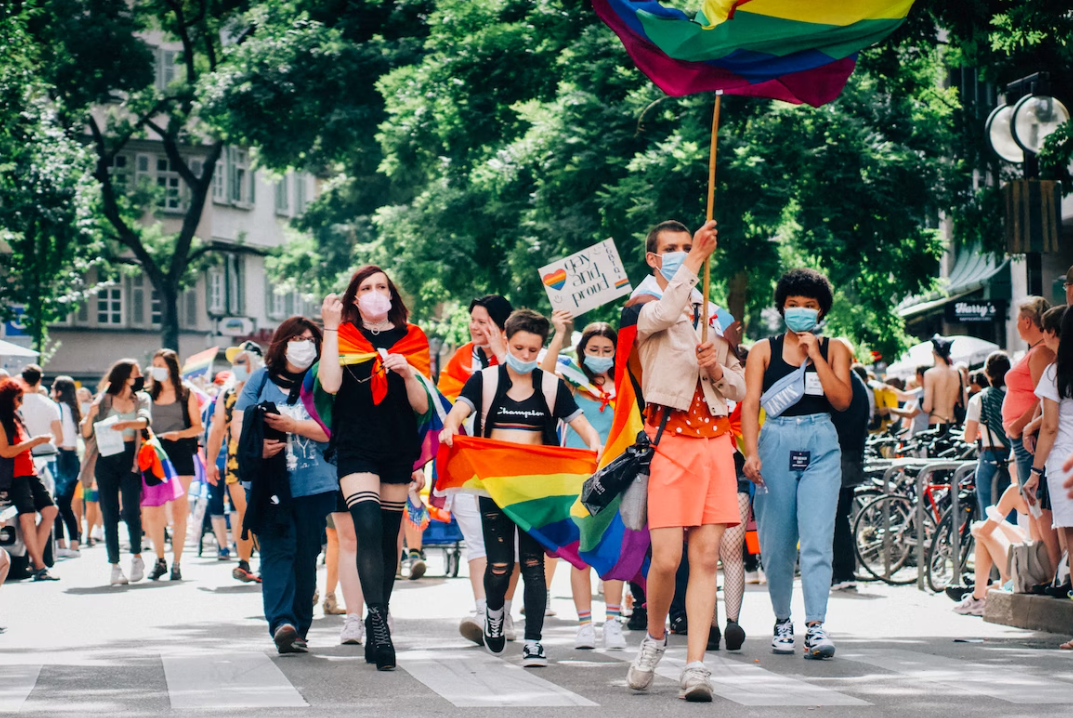In the realm of human sexuality, the LGBT community encompasses diverse identities and orientations. Among the lesser-known identities within this community is asexuality. Asexual individuals, or “aces,” are those who do not experience sexual attraction toward any gender. Asexual individuals are an important part of the LGBT community, and their unique experiences and perspectives deserve recognition and understanding. In this article, we will explore Asexual Meaning LGBT community and shed light on ten lesser-known facts about asexual individuals.
1. Asexuality as an Orientation
Asexual meaning LGBT is considered a valid sexual orientation within the LGBT spectrum. It is an innate characteristic, not a disorder or a choice. Asexual individuals may still experience romantic attraction and form deep emotional connections with others, but they do not experience sexual attraction. It is important to recognize asexual individuals as an integral part of the LGBT community and acknowledge their diverse experiences.
Asexual individuals may still experience romantic or emotional connections, but they do not feel the same level of sexual desire as most people. Asexuality is a valid and legitimate sexual orientation, deserving of acceptance and respect. Asexual individuals have diverse experiences, and their identities should be recognized and understood. Society should foster inclusivity and create safe spaces where asexual individuals can express their identities without judgment or pressure to conform to societal norms.
2. Asexuality Is Not Celibacy
Asexual Meaning LGBT should not be confused with celibacy. While celibacy refers to a deliberate choice to abstain from sexual activities, asexuality is an inherent orientation. Asexual individuals do not experience sexual attraction, regardless of whether or not they engage in sexual acts. It is crucial to understand that asexuality is not a form of abstinence or a lack of sexual experiences. Asexuality is a valid and distinct sexual orientation that deserves recognition, respect, and understanding in its own right.
Asexual individuals may choose to engage in sexual activities for various reasons, such as intimacy or to fulfill their partner’s needs, despite not experiencing sexual desire themselves.
3. Asexual Spectrum
Asexual Meaning LGBT is not a one-size-fits-all identity. The asexual spectrum encompasses a range of experiences and identities. Some individuals may identify as “gray-asexual” or “demisexual.” Gray-asexual individuals may experience occasional or limited sexual attraction, while demisexual individuals experience sexual attraction only after forming a deep emotional bond. The asexual spectrum recognizes that asexuality is not a monolithic identity, but rather a diverse range of orientations. Within the spectrum, individuals may identify as gray-asexual, demisexual, or other variations. Gray-asexual individuals experience occasional or fluctuating sexual attraction, while demisexual individuals develop sexual attraction only after forming a strong emotional bond. Understanding the asexual spectrum acknowledges the complexity of human sexuality and promotes inclusivity. By recognizing and respecting the diverse identities within the asexual spectrum, we can foster a more inclusive and accepting society for all individuals.
4. Intersectionality within Asexuality
Intersectionality within Asexual Meaning LGBT highlights the overlapping experiences of asexual individuals with other aspects of their identities. Asexual individuals can be diverse in terms of race, gender, ethnicity, disability, and more. Recognizing the intersectionality within asexuality is crucial in understanding the unique challenges and experiences faced by different individuals. It calls for an inclusive approach that addresses not only asexuality but also the systemic barriers and discrimination faced by individuals at the intersections of multiple identities. Embracing intersectionality within asexuality fosters a more inclusive and equitable understanding of diverse human experiences.
Like other LGBT identities, asexuality intersects with various other aspects of a person’s identity, such as race, ethnicity, gender identity, and disability. It is crucial to understand and address the unique challenges faced by asexual individuals from diverse backgrounds.
5. Recognizing the Importance of Visibility
Recognizing the importance of visibility for asexual individuals is crucial for fostering understanding and acceptance. Visibility breaks the silence and challenges the erasure of asexuality, allowing for representation and validation. It helps dispel misconceptions, educating society about the existence and validity of asexual orientations. Visible asexual role models and narratives provide support and a sense of belonging for those questioning or identifying as asexual. By amplifying asexual voices and experiences, we create a more inclusive world that respects and embraces the diverse spectrum of human sexuality.
Visibility plays a vital role in increasing understanding and acceptance of asexual individuals within the broader LGBT community and society at large. By raising awareness and sharing their experiences, asexual individuals contribute to the visibility of their identity, fostering a more inclusive and supportive environment.
6. Asexuality Is Not a Phase
Asexual Meaning LGBT is not a temporary phase that individuals will “grow out of” or that can be “fixed.” It is a valid sexual orientation that should be respected and understood, just like any other orientation within the LGBT spectrum. It is essential to dispel the misconception that asexuality is temporary or a result of trauma or hormonal changes. Asexual individuals may discover their orientation at different points in life, but it is not something that can be outgrown or changed. It is crucial to respect and validate asexual individuals’ self-identifications and provide support, understanding, and acceptance. Recognizing that asexuality is not a phase promotes inclusivity and affirms the authenticity of asexual experiences.
7. Asexuality and Mental Health
Asexual individuals may face unique challenges when it comes to mental health. The prevailing culture often equates worth and happiness with sexual relationships, which can lead to feelings of isolation and invalidation. Mental health support and resources tailored to asexual individuals can greatly benefit their well-being.
Asexuality and mental health are interconnected, as societal norms often pathologize or invalidate asexual identities. Asexual individuals may face challenges such as societal pressure to conform, feelings of isolation, and lack of validation. This can lead to mental health issues like anxiety, depression, and low self-esteem. It is crucial to create supportive environments that affirm asexual identities, provide education, and foster understanding. By promoting acceptance and validation, we can positively impact the mental well-being of asexual individuals, fostering a society that prioritizes mental health and respects diverse sexual orientations.
8. Romantic Relationships and Asexuality
Asexual individuals can engage in romantic relationships and form deep emotional connections. However, it is crucial to establish open and honest communication with their partners to navigate differences in sexual attraction and ensure mutual understanding and fulfillment.
9. Community Support and Advocacy
Asexual individuals can find solace and support within the asexual community, where they can connect with others who share similar experiences. Online platforms, forums, and local support groups can provide valuable spaces for sharing stories, seeking advice, and fostering a sense of belonging.
10. Asexual Awareness and Acceptance
The journey toward greater acceptance and understanding of asexual individuals within the LGBT community is ongoing. By educating ourselves, challenging stereotypes, and fostering inclusive environments, we can create a world where all individuals, regardless of their sexual orientation, are embraced and celebrated for their authentic selves.
Asexual Meaning LGBT is an important and often misunderstood aspect of the LGBT community. Asexual individuals contribute to the diversity and richness of the community, and it is essential to recognize their unique experiences and challenges. By understanding the meaning of Asexual Meaning LGBT within the LGBT context and becoming aware of the lesser-known facts about asexual individuals, we can foster greater acceptance, support, and inclusivity for all members of the LGBT community. Let us strive for a world where every individual, regardless of their sexual orientation, feels valued, respected, and embraced.




